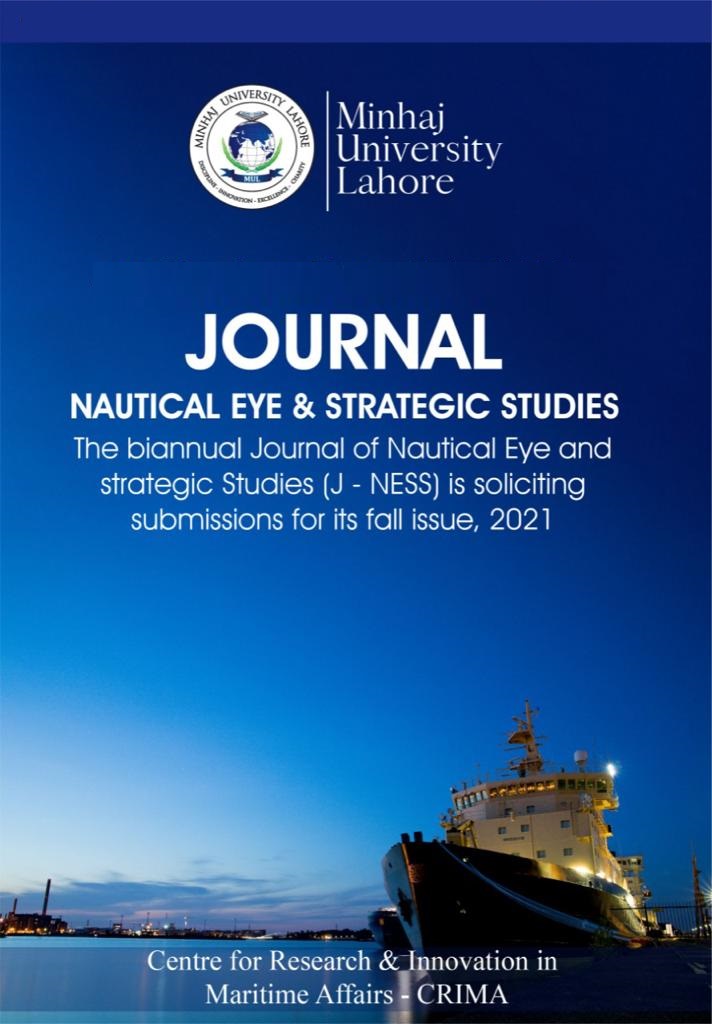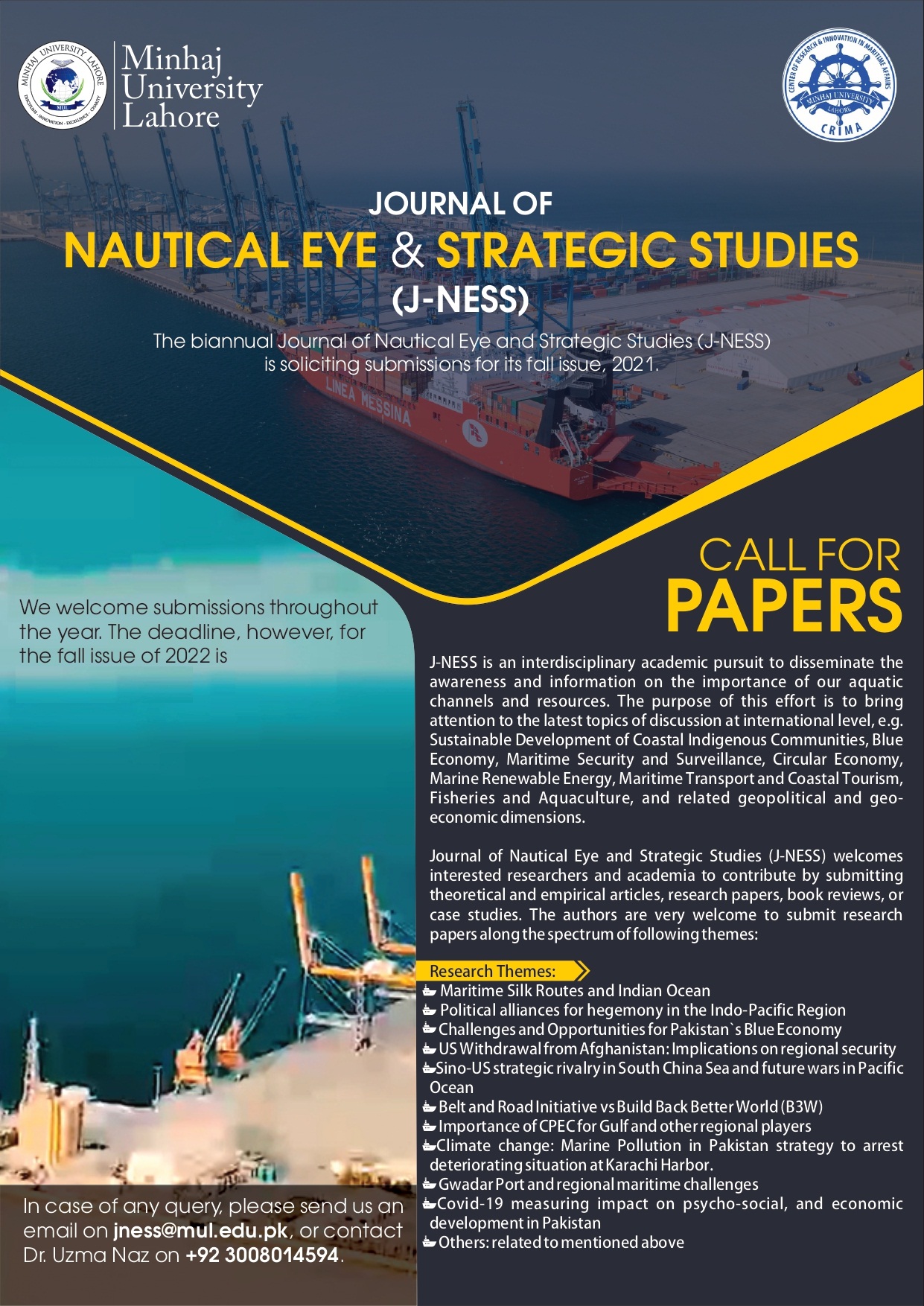The Trepidation Amid Non-Muslims in Afghanistan: A Critical Analysis of the Apprehension Confronted by the Religious Minorities in Taliban’s Rule
DOI:
https://doi.org/10.58932/MULG0045Keywords:
Trepidation, Non-Muslims, Religious Minorities, Afghan Taliban, AfghanistanAbstract
This study examines the concerns of non-Muslim religious minorities in Taliban rule in Afghanistan since 2021. As the Taliban returned to power, fear had particularly increased among Sikhs, Hindus, Christians, and other communities who were already marginalized and facing significant challenges to their survival in the country. The rigid religious laws adopted by the Taliban current regime, combined with its previous harsh policies and resurgence of other militant groups such as Islamic State Khurasan Province (ISKP) and lack of protective measures, has fuelled worries over the safety and rights of these non-Muslim minorities. Studying contemporary incidents of frequent violence and prejudice, and the background of the persecution as a guideline, this paper seeks to investigate the social, religious, and traditional factors involving concerns among minorities.
References
Adeli, Z. (2024). The consequences of Taliban policies on human rights in Afghanistan (August 2021–August 2023). East-West Center. Retrieved from https://www.jstor.org/stable/resrep57923
Ahmed, M. (2022). How religious diplomacy and pan-Islamic organizations can help stabilize Afghanistan. The German Marshall Fund of the United States. Retrieved from https://books.google.com.pk/books/about/How_Religious_Diplomacy_and_Pan_Islamic.html?id=9-ox0AEACAAJ&redir_esc=y
Amalndu, M. (2002). The Taliban, radical Islam, and Afghanistan. Third World Quarterly, 23(3), 577–589. Retrieved from https://library.fes.de/libalt/journals/swetsfulltext/13640302.pdf
America, V. O. (2021). Afghanistan's last Jew leaves after Taliban takeover. Retrieved from https://www.voanews.com/a/south-central-asia_afghanistans-last-jew-leaves-after-taliban-takeover/6219402.html
Amnesty International. (2024). Need for an urgent rethink of international response to the human rights crisis in Afghanistan. Retrieved from https://www.hrw.org/news/2024/08/14/need-urgent-rethink-international-response-human-rights-crisis-afghanistan
Amnesty International. (2024). The state of the world’s human rights.
Arify, M. (2021). Cultural and ethnic characteristics of Sikhs in Afghanistan. Advances in Anthropology, 11(1), 25-35. doi:10.4236/aa.2021.111003
Australian Government. (2022). DFAT thematic report: Afghanistan political and security developments August 2021 to January 2022 (January 2022). Department of Foreign Affairs and Trade (DFAT). Retrieved from https://www.dfat.gov.au/sites/default/files/country-information-report-afghanistan.pdf
Bank, W. (2022). The world factbook. CIA.
Barfield, T. (2010). Afghanistan: A cultural and political history. Princeton University Press. doi: https://doi.org/10.2307/j.ctt7sqkc
Barlas, A. W. (2022). Population movements in Afghanistan: A historical overview, migration trends under the Taliban regime, and future outlooks. University of Greifswald, Germany, Samangan Higher Education Institute. doi: https://mpra.ub.uni-muenchen.de/114179/1/MPRA_paper_114179.pdf
BBC. (2020, March 25). Afghanistan conflict: Militants in deadly attack on Sikh temple in Kabul. Retrieved from https://www.bbc.com/news/world-asia-52029571
Berghof Foundation. (2019). Dialogue sparks hope for peace in Afghanistan.
Bhattacherjee, K. (2024). Taliban is ‘particularly committed’ to protect rights of Hindus and Sikhs: Spokesperson of Taliban ‘Justice Ministry’. The Hindu. Retrieved from https://www.thehindu.com/news/international/taliban-is-particularly-committed-to-protect-rights-of-hindus-and-sikhs-spokesperson-of-taliban-justice-ministry/article68068378.ece
Bizhan, N. (2023). Afghanistan has no future under the Taliban. ANU Reporter.
Borchgrevink, T. (2007). Religious actors and civil society in Afghanistan’s sociopolitical landscape. Journal of Peacebuilding & Development, 4(2), 21-34.
Brookings. (2021). The collapse of the Afghan National Defense and Security Forces: Implications for U.S. security assistance and cooperation. Congressional Research Service.
Bureau of Democracy, H. R. (2007). 2007 report on international religious freedom - Afghanistan. United States Department of State. Retrieved from https://www.refworld.org/reference/annualreport/usdos/2007/en/48964
Census of India. (2011). Population by religious community. Office of the Registrar General & Census Commissioner, India. Retrieved from https://censusindia.gov.in
Center for Strategic and International Studies (CSIS). (2021). What the Taliban takeover means for Afghanistan’s future. Retrieved from https://www.csis.org/analysis/what-taliban-takeover-means-afghanistans-future
Center, P. R. (2010-2050). The future of world religions: Population growth projections. Retrieved from https://www.pewresearch.org/religion/2015/04/02/religious-projections-2010-2050/
Cheema, I. A. (2023). The status of religious minorities in Afghanistan under the Taliban regime. Asian Journal of Comparative Politics, 8(1), 56-78. doi:10.1177/20578911231145678
CIA World Factbook. (2023). Afghanistan – People and society. Retrieved from https://www.cia.gov/the-world-factbook/countries/afghanistan/#people-and-society
Das, R. K. (2022). Impact of religious extremism on Afghanistan’s non-Muslim minorities. Journal of South Asian Studies, 10(2), 215-234.
Dawn. (2021, September 7). Taliban pledge to respect rights of religious minorities. Dawn. Retrieved from https://www.dawn.com/news/1645069
Department of State. (2021). 2021 Report on international religious freedom: Afghanistan. U.S. Department of State. Retrieved from https://www.state.gov/reports/2021-report-on-international-religious-freedom/afghanistan
Deutsche Welle (DW). (2022, July 24). Last Sikh exodus from Afghanistan amid Taliban rule. Retrieved from https://www.dw.com/en/last-sikh-exodus-from-afghanistan-amid-taliban-rule/a-62547234
Ethnologue. (2022). Languages of Afghanistan. SIL International. Retrieved from https://www.ethnologue.com/country/AF
EUAA. (2024). Individuals considered to have committed blasphemy and/or apostasy. European Union Agency for Asylum. Retrieved from https://euaa.europa.eu/country-guidance-afghanistan-2022/210-individuals-considered-have-committed-blasphemy-andor
Freedom House. (2023). Freedom in the world 2023: Afghanistan. Retrieved from https://freedomhouse.org/country/afghanistan/freedom-world/2023
Global Religious Futures. (2015). The future of world religions: Population growth projections, 2010-2050. Pew Research Center.
Grare, F. (2022). The Taliban’s treatment of religious minorities: An assessment. Carnegie Endowment for International Peace. Retrieved from https://carnegieendowment.org/2022/08/11/taliban-treatment-of-religious-minorities-assessment-pub-87701
Guardian. (2022, August 15). Afghanistan: A year under Taliban rule. Retrieved from https://www.theguardian.com/world/2022/aug/15/afghanistan-a-year-under-taliban-rule
Human Rights Watch (HRW). (2023). Afghanistan: Taliban policies systematically repress women. Retrieved from https://www.hrw.org/news/2023/02/01/afghanistan-taliban-policies-systematically-repress-women
International Crisis Group. (2021). Afghanistan’s religious minorities under the Taliban. Retrieved from https://www.crisisgroup.org/asia/south-asia/afghanistan/afghanistans-religious-minorities-under-taliban
Imam, M. A., Ahmad, S., Bhatti, M. A. A., & Afzal, M. (2023). Contextualizing Research Approaches: The Role of Western and Islamic Philosophies in Shaping Methodology and Knowledge Creation. Al-Irfan, 8(16), 69-90.
Jafferlot, C. (2022). Hindus and Sikhs in Afghanistan: A dwindling minority. Oxford University Press.
Khan, H. A. (2023). Displacement and survival: The struggles of Afghanistan’s Hindu and Sikh communities. South Asian Review, 44(1), 89-105.
Minority Rights Group International. (2023). World directory of minorities and indigenous peoples – Afghanistan: Hindus and Sikhs. Retrieved from https://minorityrights.org/minorities/hindus-and-sikhs-in-afghanistan
Reuters. (2022, June 18). Attack on Sikh temple in Kabul kills at least two. Retrieved from https://www.reuters.com/world/asia-pacific/attack-sikh-temple-kabul-kills-least-two-2022-06-18
Rafaqat, M. ., Azad, F. ., Ahmad, S. ., Aijaz, K. ., Ikram, S. H. ., Bashir, U. ., Bhatti, M. A. A. ., & Saeed, S. . (2024). Impact of Governance and Strategy Performance on Employer Branding. Research Journal for Societal Issues, 6(2), 852–867.
Sahni, P. (2021). The exodus of Hindus and Sikhs from Afghanistan: A historical perspective. Journal of South Asian Studies, 9(3), 134-152.
Samar, S. (2022). Human rights under the Taliban: A report on minorities in Afghanistan. International Journal of Human Rights, 26(4), 459-478.
Sharma, A. & Verma, R. (2023). Religious extremism and its impact on Afghanistan’s Hindu and Sikh communities. Asian Affairs, 54(1), 67-85.
Singh, P. K. (2022). Afghanistan’s forgotten minorities: The plight of Hindus and Sikhs. Journal of Ethnic and Migration Studies, 48(6), 987-1005.
The Diplomat. (2022, August 22). The fate of Afghanistan’s religious minorities under Taliban rule. Retrieved from https://thediplomat.com/2022/08/the-fate-of-afghanistans-religious-minorities-under-taliban-rule
The Hindu. (2022, July 17). Last group of Afghan Sikhs to leave Kabul amid security concerns. Retrieved from https://www.thehindu.com/news/international/last-group-of-afghan-sikhs-to-leave-kabul-amid-security-concerns/article65645007.ece
United Nations Assistance Mission in Afghanistan (UNAMA). (2023). Report on the human rights situation in Afghanistan. United Nations. Retrieved from https://unama.unmissions.org/human-rights-reports
United Nations High Commissioner for Refugees (UNHCR). (2022). Afghanistan situation: Displacement and protection concerns. Retrieved from https://www.unhcr.org/afghanistan-emergency.html
World Bank. (2023). Afghanistan economic update. Retrieved from https://www.worldbank.org/en/country/afghanistan/publication/afghanistan-development-update
Downloads
Published
How to Cite
Issue
Section
License
Copyright (c) 2024 Journal of Nautical Eye and Strategic Studies

This work is licensed under a Creative Commons Attribution-NonCommercial 4.0 International License.










